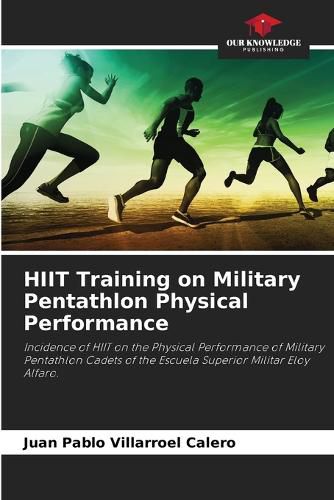Readings Newsletter
Become a Readings Member to make your shopping experience even easier.
Sign in or sign up for free!
You’re not far away from qualifying for FREE standard shipping within Australia
You’ve qualified for FREE standard shipping within Australia
The cart is loading…






The military pentathlon is a sport that combines 5 events (rifle shooting, obstacle course, swimming with obstacles, grenade throwing, and cross country running) and it is here where low performance of the ESMIL cadets was detected, the objective of the study was to apply an intervention with high intensity HIIT interspersed circuit training. For this, a quantitative research of quasi-experimental approach was applied, with a non-probabilistic sampling by convenience to a group of 7 cadets aged 21.14 +/- 0.9 years for 12 weeks, with a training structure of (6 exercise x 20 sec of work x 4 series and a micro recovery of 20 sec and macro of 60 sec). For the collection of the results, a strength evaluation was applied before and after the intervention; once the data were collected, they were analyzed with the statistical program SPSS version 25. With this it was possible to verify that the data complied with normality, the parametric Student's T test for related samples was applied, where it was determined that the 5 strength tests had a significance > 0.05, thus proving the improvement of the cadets' performance.
$9.00 standard shipping within Australia
FREE standard shipping within Australia for orders over $100.00
Express & International shipping calculated at checkout
The military pentathlon is a sport that combines 5 events (rifle shooting, obstacle course, swimming with obstacles, grenade throwing, and cross country running) and it is here where low performance of the ESMIL cadets was detected, the objective of the study was to apply an intervention with high intensity HIIT interspersed circuit training. For this, a quantitative research of quasi-experimental approach was applied, with a non-probabilistic sampling by convenience to a group of 7 cadets aged 21.14 +/- 0.9 years for 12 weeks, with a training structure of (6 exercise x 20 sec of work x 4 series and a micro recovery of 20 sec and macro of 60 sec). For the collection of the results, a strength evaluation was applied before and after the intervention; once the data were collected, they were analyzed with the statistical program SPSS version 25. With this it was possible to verify that the data complied with normality, the parametric Student's T test for related samples was applied, where it was determined that the 5 strength tests had a significance > 0.05, thus proving the improvement of the cadets' performance.